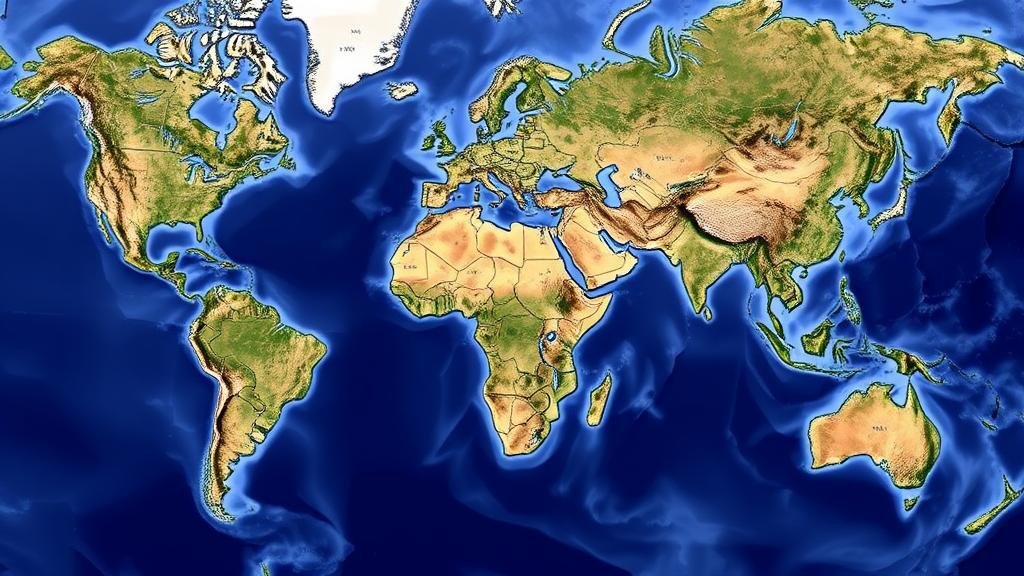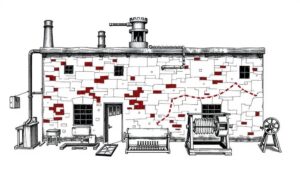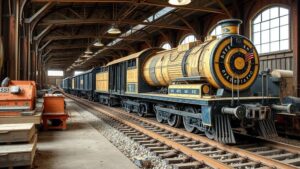Using AI to Compare Historical Maps to Modern Satellite Images for Overlaps
Using AI to Compare Historical Maps to Modern Satellite Images for Overlaps
This research article explores the application of artificial intelligence (AI) in the comparison of historical maps with modern satellite imagery. The ability to identify overlaps between these two distinct datasets opens new opportunities for historical analysis, urban planning, and environmental monitoring.
Introduction
Historical maps serve as valuable records of the geographical, political, and social landscapes of past eras. By contrast, modern satellite images provide a comprehensive perspective of current land use and geographical changes. integration of these two resources through AI methodologies offers profound insights into urban development, environmental changes, and historical land use patterns.
The Evolution of Mapping Techniques
Mapping techniques have evolved significantly over the centuries. For example, the Ptolemaic maps of the 2nd century AD relied on a conceptual understanding of geography. By the 18th century, detailed topographical maps began to emerge, such as John Speed’s maps of England created around 1610.
- The first satellite images of Earth were captured in the late 1950s, such as the first image from Explorer 6 in 1959.
- Today, satellites like Landsat and Sentinel-2 provide high-resolution imagery, adding an unprecedented level of detail and accuracy.
AI Techniques for Image Comparison
Artificial intelligence encompasses various machine learning algorithms and computer vision techniques that can analyze and compare large datasets efficiently. Notably, convolutional neural networks (CNNs) and image recognition algorithms can assist in discerning visual similarities between historical maps and modern satellite images.
Convolutional Neural Networks
Convolutional Neural Networks (CNNs) are particularly effective in image classification tasks. By training CNNs on datasets containing both historical maps and their corresponding satellite images, researchers can identify features such as roads, buildings, and natural landscapes with impressive accuracy.
Georeferencing and Image Registration
Georeferencing involves aligning historical maps with a coordinate system used in modern mapping. Image registration then adjusts the scale, rotation, and perspective discrepancies between the two inputs. e techniques are crucial for accurate comparisons and have been successfully implemented in various case studies.
Case Studies and Applications
The integration of AI in comparing historical maps with modern satellite imagery has been exemplified in multiple studies worldwide:
- Cities in Transition: A study conducted in Paris examined urban expansion by comparing historical maps from the 19th century with current satellite imagery. AI techniques were able to reveal the extent of changes in land use and urban density.
- Environmental Monitoring: In the Amazon Basin, comparisons between historical deforestation maps and satellite images have enabled researchers to monitor environmental changes and land degradation over several decades, identifying critical areas for conservation efforts.
Challenges and Limitations
Despite the advancements, several challenges persist in this field of study:
- Data Quality: Historical maps may suffer from inaccuracies due to the technological limitations when they were created, which can complicate comparisons.
- Computational Power: Large datasets require powerful computing resources for processing and analysis, which may not always be available.
Conclusion
The integration of AI in comparing historical maps to modern satellite images presents numerous benefits and applications in various fields, including urban planning and environmental monitoring. While challenges remain, ongoing research and technological improvements continue to pave the way for enhanced analysis and understanding of historical geographical transitions.
Actionable Takeaways
- Researchers should consider implementing AI techniques like CNNs for improved analysis of geographical changes.
- Collaboration between historians, geographers, and data scientists can lead to innovative applications that enhance understanding of urban and environmental dynamics.
Ultimately, the fusion of historical cartography and modern technology not only fosters a deeper understanding of the past but also informs present and future decisions regarding land use, conservation, and urban development.



